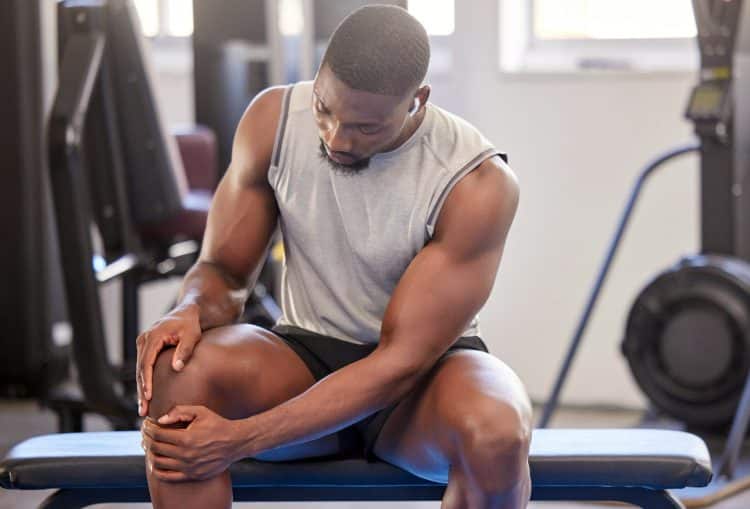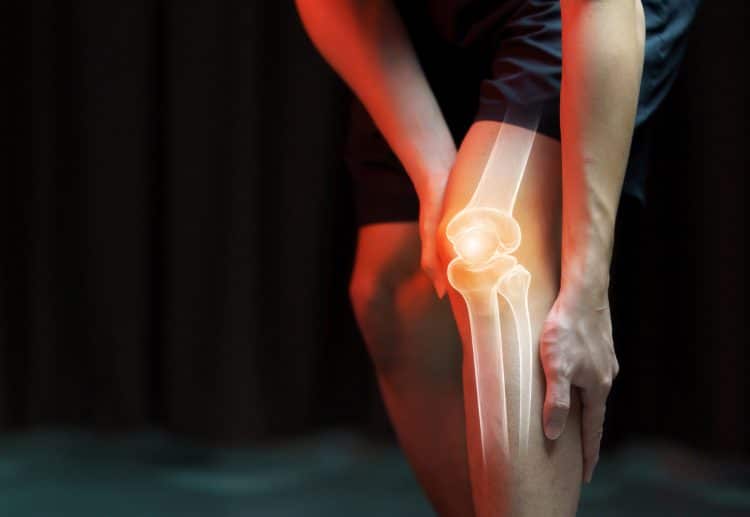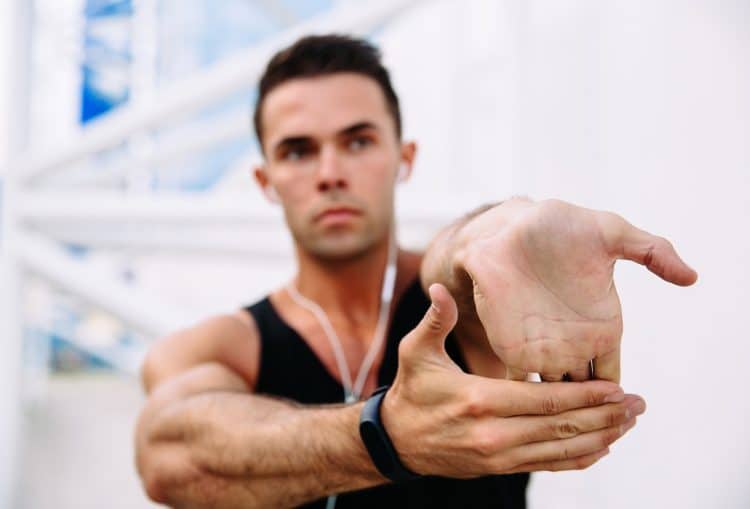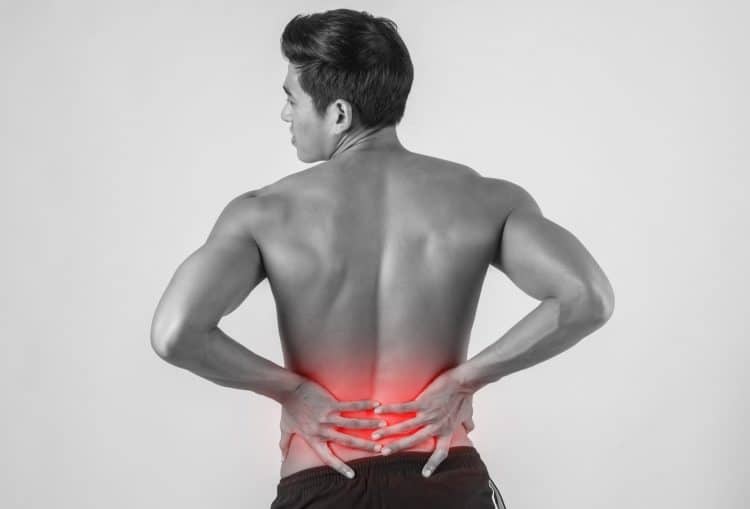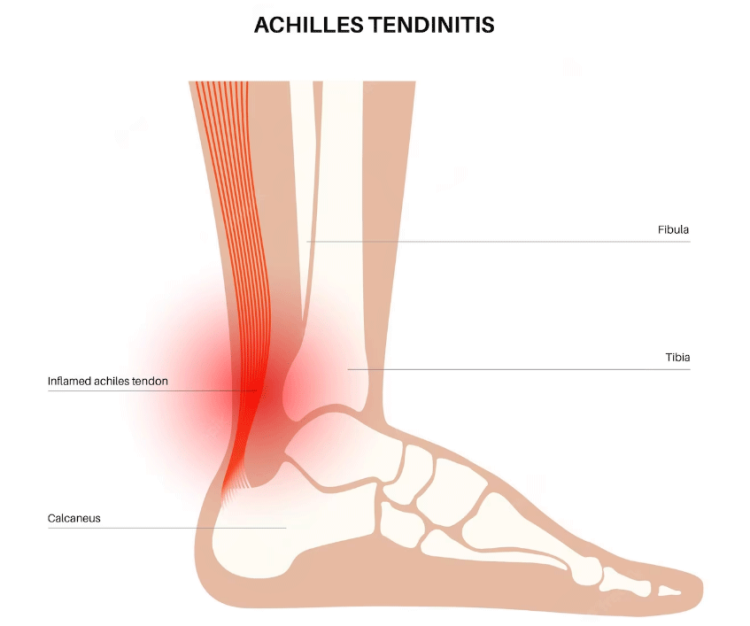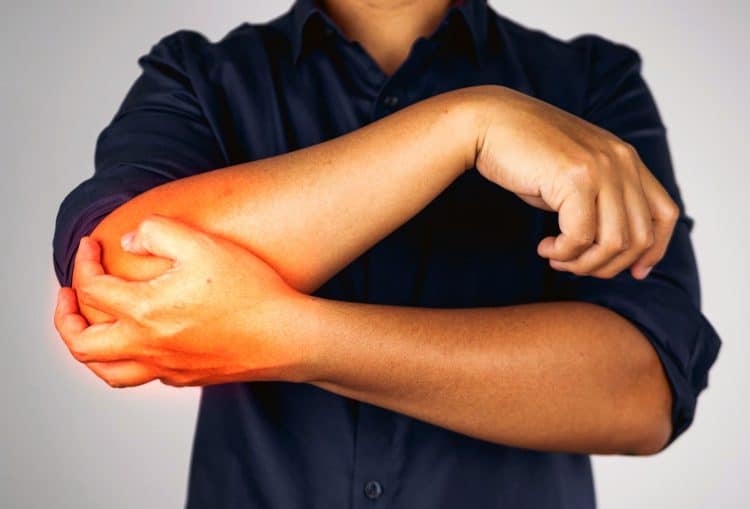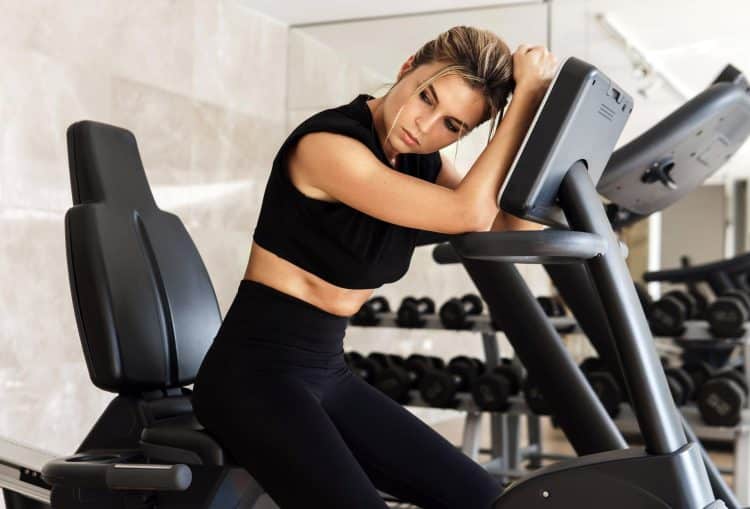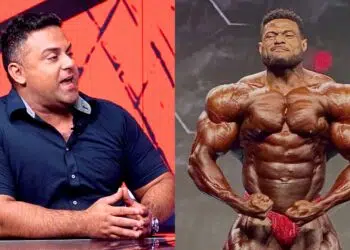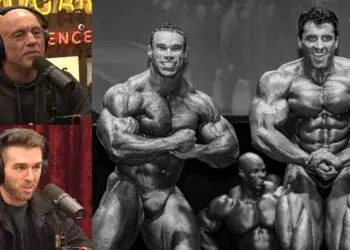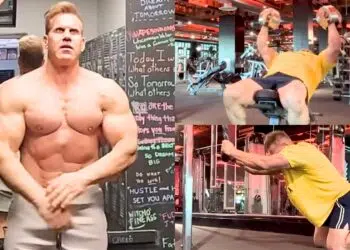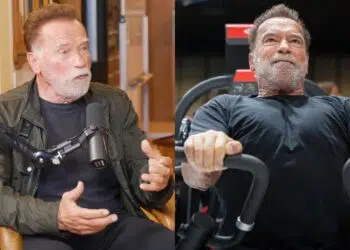Bodybuilding is one of the safest forms of exercise around. In terms of risk per 1000 hours of participation, bodybuilding ranks as much safer than soccer, football, and many other popular recreational activities (1).
- Injury rate for exercise and exercise equipment: 5.3 injuries per 1000 hours
- Injury rate for baseball: 6.7 injuries per 1000 hours
- Injury rate for soccer: 7.1 injuries per 1000 hours
- Injury rate for basketball: 8.2 injuries per 1000 hours
- Injury rate for football: 11.7 injuries per 1000 hours
In fact, hitting the gym and lifting weights can significantly lower your chances of getting hurt. This is due to factors such as enhanced muscle strength, increased joint stability, stronger tendons and ligaments, and improved balance.
However, despite their statistical rarity, bodybuilding injuries still occur, and most lifters will experience at least a couple during their training careers. The harder and longer you lift, the greater your risk becomes.
In this article, we reveal the most common bodybuilding injuries and the steps you need to take to avoid them.
1. Muscle Tears
Tears occur when you expose your muscles to more stress than they can handle. They can also be the result of overstretching. Also known as strains or pulls, you can tear almost any muscle, and they usually come on very suddenly. Common causes of muscle tears include lifting more weight than you’re used to, not warming up enough, or trying to push past failure.
Level Up Your Fitness: Join our 💪 strong community in Fitness Volt Newsletter. Get daily inspiration, expert-backed workouts, nutrition tips, the latest in strength sports, and the support you need to reach your goals. Subscribe for free!
Depending on the severity of a muscle tear, you could be back in training in a week or two or out for months because you need surgery. Muscle tears are ranked according to how deep the tissue damage is:
Grade 1 Muscle Tear (Mild):
Mild muscle tears involve minor damage to a few muscle fibers. This results in minor pain, minimal swelling, and little to no loss of strength or function. The affected area may be tender, and the injured muscle may feel tight or stiff. Recovery usually takes a few weeks with rest, ice, compression, and elevation (RICE).
Grade 2 Muscle Tear (Moderate):
A grade two strain involves the tearing of many muscle fibers, leading to more noticeable pain, swelling, and bruising. The symptoms include reduced strength and limited range of motion. Recovery may take several weeks to a few months, often involving physical therapy and gradual reintroduction of activity.
Grade 3 Muscle Tear (Severe):
Overview: Complete rupture or tearing of muscle fibers, resulting in significant pain, swelling, bruising, and loss of function. Grade three muscle tears usually require medical attention, immobilization, and potentially surgery.
Recovery time can vary from a few months to longer, depending on the muscle affected and the chosen treatment. Pectoralis major (pec) and biceps tears are especially common in bodybuilding.
If you suspect you have a torn muscle, it’s important to note that proper diagnosis by a medical professional is crucial to determine the grade of a muscle tear and to develop an appropriate treatment plan.
You can minimize your risk of suffering muscle tears or strains by:
- Warming up thoroughly before every workout.
- Increasing your training weights, workout intensity, and volume gradually over many weeks and months.
- Avoiding training when tired.
- Avoiding extreme ranges of motion and overstretching.
- Not lifting very heavy weights and instead focusing more on moderate weights and higher reps.
- If you do want to lift heavy, e.g., transitioning from bodybuilding to powerlifting, gradually ease into low-rep/high-weight training rather than attempting a new 1RM too soon.
Related: How to Stay Safe When Lifting Heavy at the GYM
2. Tendonitis and Tendinosis
Your muscles are attached to your bones by tendons, which are strap or cordlike lengths of inelastic connective tissue. The main function of tendons is to transmit the forces generated by your muscles into your bones to produce movement.
Tendons are very tough but, like muscles, can be torn. Partial tears usually heal by themselves, albeit relatively slowly, whereas full-thickness tendon tears, called ruptures, require surgery to repair. However, thankfully, tendon tears are also quite rare.
Bodybuilders are much more likely to experience tendonitis, which, if ignored, can become tendinosis.
Tendonitis
Tendonitis means inflammation of the tendon and is usually a sign of an overuse injury. Bodybuilders get tendonitis when they do the same exercises over and over or fail to pay enough attention to rest and recovery. Tendonitis can also be caused by movements that put your joints in a mechanically disadvantageous position, such as behind-the-neck presses.
Common symptoms of tendonitis include pain, tenderness, and swelling of the affected tendon. Many lifters train through tendonitis as it often feels better once you warm up the problem area. Tendonitis is common in the biceps and triceps tendons but can affect any overused tendon.
Rest, ice, anti-inflammatory medications, and physical therapy are often used to treat tendonitis.
Tendinosis
Tendonosis is the inflammation and degeneration (breakdown) of the affected tendon. This degeneration can result in structural changes within the tendon, such as the breakdown of collagen fibers and the development of microtears. Tendonosis is often caused by ignoring the initial onset of tendonitis and training through the pain rather than resting.
Tendons affected by tendinosis are weak, like a frayed rope, and much more prone to tearing.
Reduce your risk of suffering tendonitis and tendinosis by:
- Warming up thoroughly before every workout.
- Avoiding exercises that aggravate your joints or put them into awkward positions.
- Including rest days in your training week and taking deloads every couple of months.
- Rotating the exercises in your workouts to avoid overuse injuries.
- Not training through joint pain.
3. Rotator Cuff Injuries
Shoulder injuries are common in bodybuilding, and problems with the rotator cuff are a leading cause. The rotator cuff is a small but critical group of deep shoulder muscles. The rotator cuff is responsible for controlling and stabilizing your shoulder joint.
Despite being relatively small, the rotator cuff can cause a lot of problems for bodybuilders and is a common source of pain. Common rotator cuff issues include muscle tears, weakness, impaired function, and tendonitis.
The four muscles that make up the rotator cuff are:
- Supraspinatus: Helps raise the arm to the side, especially at the start of overhead movements like shoulder presses.
- Infraspinatus: Aids in rotating the arm outward, like when you’re setting up for a bench press or performing lateral raises.
- Teres Minor: Works with the infraspinatus to help rotate the arm outward and stabilize the shoulder during pressing movements.
- Subscapularis: Helps rotate the arm inward and stabilizes the shoulder joint, which is important for bench pressing and overhead movements.
Most rotator cuff problems result from tightness, weakness, or overuse. For example, doing a lot of pushing exercises but very little pulling can create an imbalance between your medial and lateral rotators, leading to shoulder instability and pain.
Keep your risk of rotator cuff problems to a minimum by:
- Including dedicated rotator cuff exercises in your workouts, especially external rotation movements.
- Avoiding behind-the-neck movements, e.g., behind-the-neck pulldowns and overhead presses.
- Balancing your pushing and pulling exercises.
- Using but not abusing the bench press.
- Warming up your shoulders before heavy lifting.
4. Lower Back Strain
Bodybuilders often have immensely strong lower backs, but that doesn’t make them injury-proof. Lower back injuries are a common problem for all exercisers and can be extremely debilitating. After all, you use your lower back during all upper and lower body exercises and most movements outside of the gym, too.
While it’s possible to strain your lower back muscles, lumbar spine injuries are usually more of an issue for bodybuilders and are also more serious.
Your lumbar spine is a column of five bones called vertebrae. Each one is connected by ligaments and separated by intervertebral discs.
When your lumbar spine is in optimal alignment, i.e., with a slight inward curve, there is very little stress on the discs or ligaments, and the load is supported by your muscles. However, if you round your lower back, that stress falls on your discs and ligaments, which are easily damaged and take a long time to heal. This slow healing is due to these structures’ poor blood supply.
For example, rounding your lower back during squats, deadlifts, or bent-over rows can cause severe injuries to your lower back.
You can reduce your risk of lower back injury by:
- Learning to brace your core to stabilize your lumbar spine.
- Wearing a weightlifting belt for extra lumbar support.
- Improving your hamstring flexibility so you are less likely to round your lower back when leaning forward.
- Becoming more posturally aware so you know when your lower back is rounding.
- Not going using weights that are too heavy to lift with good technique.
5. Joint Sprains
Where muscle injuries are often referred to as strains, joint injuries are known as sprains. A sprain occurs when a joint is extended beyond its usual range of motion, resulting in damage to the surrounding ligaments.
Any joint can be sprained, but the ankles and knees are probably the most common. For example, you could sprain an ankle when tripping over a discarded weight plate or sprain your knee when twisting your body in the opposite direction to your foot.
Knee sprains can cause serious damage to the ligaments around and within the knee. These include the following:
- Anterior Cruciate Ligament (ACL)
Function: Prevents excessive forward movement of the tibia (shinbone) relative to the femur (thighbone). It also contributes to rotational stability. - Posterior Cruciate Ligament (PCL)
Function: Prevents excessive backward movement of the tibia relative to the femur. It also contributes to rotational stability, especially when the knee is flexed. - Medial Collateral Ligament (MCL)
Function: Provides stability against forces pushing the knee inward (valgus stress). It helps prevent the knee from buckling inwards. - Lateral Collateral Ligament (LCL)
Function: Provides stability against forces pushing the knee outward (varus stress). It helps prevent the knee from buckling outwards. - Medial Patellofemoral Ligament (MPFL)
Function: Anchors the patella (kneecap) to the femur and helps prevent lateral dislocation of the patella. - Lateral Patellofemoral Ligament (LPFL)
Function: Assists in stabilizing the patella and preventing medial dislocation of the patella.
These ligaments work together to maintain the stability and proper alignment of the knee joint during various movements and activities. Because they have a poor blood supply, ligaments can take a long time to heal, and complete ruptures usually require surgery.
Minimize your risk of suffering joint sprains by:
- Using a controlled range of motion for all exercises.
- Avoiding hyperextension and over-flexion of your joints.
- Training the muscles on both sides of your joints equally, e.g., hamstrings AND quadriceps.
- Training on even, stable surfaces.
- Keeping your joints properly aligned throughout your workout.
6. Joint Wear and Tear
Joint sprains typically come on suddenly, making them acute injuries. However, joint wear and tear is more insidious and develops over time. This is also known as a chronic injury.
Level Up Your Fitness: Join our 💪 strong community in Fitness Volt Newsletter. Get daily inspiration, expert-backed workouts, nutrition tips, the latest in strength sports, and the support you need to reach your goals. Subscribe for free!
All movements cause wear and tear, and joint degeneration is a part of the aging process. However, repetitive and extreme movements can speed up joint breakdown, leading to pain and dysfunction.
Joints are formed wherever two or more bones meet. Joints can be fixed, like those in your skull, fibrous, like those of your spine, or synovial, such as those in your knees, hips, shoulders, elbows, etc.
The bones that make up synovial joints have a tough, protective endcap called hyaline cartilage, which protects them from damage. However, this cartilage can become worn or damaged, which affects the function of the joint. Worn and damaged cartilage can result in joint pain, stiffness, and swelling.
While a certain amount of joint wear and tear is unavoidable, bodybuilders should do their best not to make it worse than it needs to be. After all, you want your knees, hips, etc., to last a lifetime. Sure, worn joints CAN be replaced, but even the best-made artificial joints are not as good as those made by Mother Nature.
Strategies for avoiding joint pain include:
- Warming up thoroughly before every workout to increase synovial fluid production, which helps lubricate and nourish hyaline cartilage.
- Avoiding extreme or uncomfortable ranges of movement, e.g., squatting deeper than feels natural.
- Wearing supportive, warming knee and elbow sleeves.
- Keeping your body weight within healthy parameters.
- Ensuring adequate flexibility and mobility in all your major joints.
7. Elbow Pain (Golfer’s/Tennis Elbow)
Your elbows are arguably the hardest working joint in your body. Every upper and lower body exercise you do involves your elbows, even if the exercises train different muscles. After all, pushing and pulling exercises both feature elbow flexion and extension, so the stress on these joints is pretty significant.
There are two common ailments that can affect this hard-working joint – golfer’s and tennis elbow. Both are caused by overuse and muscle imbalances. The basics of each condition are detailed below:
Golfer’s Elbow (Medial Epicondylitis)
- Location: Pain and inflammation occur on the inner side of the elbow, near the bony bump (medial epicondyle).
- Cause: Repetitive wrist flexion and gripping activities, often associated with golf swings, lifting, or other activities that strain the forearm muscles.
- Symptoms: Pain, tenderness, and weakness on the inner side of the elbow. Pain may radiate down the forearm.
- Grip Weakness: Can lead to reduced grip strength, especially when trying to grip objects or make a fist.
- Common Activities: Activities involving gripping, swinging, or lifting, such as golf, weightlifting, or carrying heavy objects.
Tennis Elbow (Lateral Epicondylitis)
- Location: Pain and inflammation occur on the outer side of the elbow, near the bony bump (lateral epicondyle).
- Cause: Repetitive wrist extension and gripping activities, often associated with tennis backhands, typing, or other activities that strain the forearm muscles.
- Symptoms: Pain, tenderness, and weakness on the outer side of the elbow. Pain may radiate down the forearm.
- Grip Weakness: Can lead to reduced grip strength, especially when trying to grip objects or make a fist.
- Common Activities: Activities involving repetitive wrist movements and gripping, such as tennis, typing, or using tools.
Golfer’s and tennis elbow can be debilitating and put the brakes on productive training, so avoidance is your best strategy. Reduce your risk of developing these conditions by:
- Gradually increase the intensity and duration of gripping and wrist-extending activities to avoid sudden strain on the forearm muscles.
- Perform regular forearm stretches and strengthening exercises to maintain flexibility and muscle balance.
- Consider using an elbow brace or compression sleeve during activities that strain the forearm muscles.
- Ensure proper wrist position during activities that involve repetitive wrist movements.
- Avoid excessive repetitive gripping or wrist movements, especially with poor wrist positioning.
- Use ergonomic equipment and tools that minimize wrist strain.
- Warm up before engaging in activities that involve gripping or repetitive wrist movements.
- Take regular breaks during repetitive activities to give your forearm muscles and tendons a chance to rest.
- Listen to your body and stop any activity if you feel pain or discomfort in your elbows or forearms.
- If you’re new to a sport or activity, start slowly and gradually increase the intensity to allow your muscles and tendons to adapt.
8. Overtraining
While overtraining is not a specific injury, it can cause your workouts to become unproductive and can cause injuries to occur. Overtraining happens when your workouts exceed your ability to recover.
Symptoms of overtraining include:
- Your progress has stalled
- You’re regressing
- You’re gaining fat
- You are constantly sore and achy
- You’ve got nagging injuries
- You’re moody or stressed
- You can’t sleep
- Your resting heart rate is higher than normal
- You keep getting ill
- Your appetite has changed
- You’ve lost your motivation
- You’re experiencing more stomach upsets
- You have irregular or absent menstrual periods
- You’re tired all the time
- You’ve lost your sex drive
Depending on the severity, it can take a week or two to several months to overcome overtraining. In some cases, recovery takes so long that you may never return to the same level of training. Needless to say, avoidance is better than trying to treat overtraining.
Strategies for reducing your risk of developing this debilitating condition include:
Apologies for the confusion. Here’s the text with the structure you mentioned:
Strategies for reducing your risk of developing this debilitating condition include:
- Taking a break from formal training if you are unable to recover from your workouts. Engage in low-intensity activities like walking until you feel recovered.
- Evaluating your workout plan by choosing or designing a more conservative routine. Include rest days to prevent overtraining.
- Gradually ease yourself back into training by starting with short, low-intensity, and infrequent workouts. Increase intensity gradually over several weeks while watching for overtraining symptoms.
- Providing your body with vitamins, minerals, antioxidants, and protein for recovery through nutritious eating. Avoid junk food and opt for clean eating to minimize fat gain.
- Setting realistic goals to prevent overtraining. Assess your training objectives and consider setting attainable goals to build recovery ability over time.
- Seeking professional help if you exhibit exercise addiction signs. Chronic overtraining can harm your health irreparably, so seeking assistance is crucial.
Common Bodybuilding Injuries – FAQs
Do you have a question about common bodybuilding injuries and how to prevent them? No problem, because we’ve got the answers!
1. I keep straining the same muscle – what should I do?
There are several reasons why you might be injuring the same muscle repeatedly. These include returning to training too hard too soon, the muscle is tight, the muscle is weak, or whatever you are doing doesn’t suit your anatomy or abilities.
If, after addressing these issues, you continue to have problems with the same muscle, you should speak to a physiotherapist or similar, as there may be an underlying issue that needs resolving.
2. What is RICE, and how do I use it to treat an injury?
RICE is an acronym for Rest, Ice, Compression, and Elevation, which is a four-step routine for the initial treatment of injuries.
Rest prevents the injury from worsening, while ice helps reduce inflammation and swelling while providing natural pain relief. Compression and elevation also reduce inflammation and swelling. Following RICE may help speed up the initial stages of injury repair.
3. What steps can I take to minimize the risk of rotator cuff injuries?
Problems with the rotator cuff are usually caused by either weakness or tightness. Strengthening the rotator cuff invariably involves medial (internal) and lateral (external) rotation against resistance, e.g., rubber bands, a cable machine, or dumbbells. Tight rotator cuff muscles need gentle stretching.
You can read more about fixing your rotator cuff here.
4. What are some common signs that I might be overtraining?
Overtraining means you are doing more exercise than your body can handle. Getting more rest and eating more healthily can help. However, a break from training may be necessary so your body can fully recover.
Common symptoms of overtraining include:
- Stalled progress.
- Unexplained weight loss or gain
- Frequent aches, pains, and minor injuries.
- Mood changes.
- Difficulty sleeping.
- Higher than average resting heart.
- Frequent illness.
- Reduced motivation
- You’re tired all the time
- You’ve lost your sex drive
5. How can I tell the difference between golfer’s elbow and tennis elbow?
The main difference between golfer’s and tennis elbow is the areas of your elbow and forearm affected. Golfer’s elbow typically presents with pain on the medial aspect or inside of the elbow. In contrast, tennis elbow is usually felt on the lateral aspect or outside of the elbow.
Regardless of what you have, both conditions are usually caused by overuse and are treated with RICE, stretching, and strengthening exercises.
Read more about golfer’s and tennis elbow and other elbow injuries here.
6. What is the difference between acute and chronic injuries?
Acute and chronic are medical terms used to describe the speed at which an injury develops. Acute injuries come on rapidly and include joint sprains and muscle sprains. In contrast, chronic injuries can take weeks or months to develop and include overuse injuries, tendinitis, and joint wear and tear.
It’s worth noting that acute injuries have a nasty habit of turning into chronic injuries when ignored or left untreated.
7. What are the leading causes of lower back strain in bodybuilders?
Back pain in bodybuilders can be caused by several things, including poor flexibility, improper lifting technique, poor posture, weak core muscles, overexertion, and muscle imbalances. In many cases, the pain is the result of several converging factors.
Lifting heavy weights is hard on your body and puts a lot of stress on your lower back. Because back pain can be so debilitating, you should always treat your spine with respect and do your utmost to protect it from injury.
Check out our detailed guide to avoiding back pain here.
8. Does stretching help prevent injuries?
Tight muscles are more easily strained than flexible muscles, especially during exercises that involve an extended range of motion, such as deep squats, lunges, and Romanian deadlifts. As such, stretching could help prevent some types of injury.
However, the act of stretching can also cause injuries, especially if you stretch a cold muscle or try to stretch too far too quickly. So, while stretching is beneficial and could help reduce your risk of injury, you should take it slow and easy to avoid hurting yourself.
9. How does exercise technique affect my risk of injury?
There are two ways to do most exercises – the right way and the wrong way. The right way targets the muscles you want to develop, puts your joints in a biomechanically sound position, and makes your workout as safe and effective as possible.
In contrast, the wrong often puts stress on other parts of your body, puts your joints in an awkward position, and makes your workout less safe and effective.
While even the best technique doesn’t guarantee you’ll never get injured, it certainly lowers your risks. So, when in doubt, use a little less weight or do fewer reps so you can use perfect exercise technique.
10. How can I reduce my risk of shoulder injuries?
Shoulder pain is a common problem for bodybuilders. The shoulders are a very mobile yet unstable, hard-working joint. Strengthening and stretching your rotator cuff can help prevent many shoulder injuries, as can following a balanced push/pull program so your upper body muscles are developed equally.
You should also avoid high-risk exercises like deep dips, behind-the-neck presses and pulldowns, and doing too much bench pressing. Bench pressing is a leading cause of shoulder pain.
Closing Thoughts
Sculpting your perfect body takes time, energy, and discipline. It can also take its toll on your muscles and joints, possibly leading to injury.
Use the strategies in this article to keep that risk of injury to a minimum. Remember, bodybuilding is not just about lifting weights – it’s about training smarter, recovering better, and progressing safely. It’s also a marathon, not a sprint, to think about your long-term goals, not just today’s set or workout.
Listen to your body, and don’t ignore pain or discomfort. Training through injuries can be very appealing, but it often means storing up problems for the future.
References:
1 – Horton R. GBD 2010: Understanding disease, injury, and risk. Lancet. 2012 Dec 15;380(9859):2053-4. doi: 10.1016/S0140-6736(12)62133-3. PMID: 23245595.

